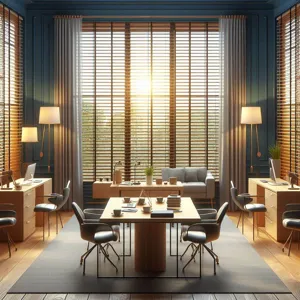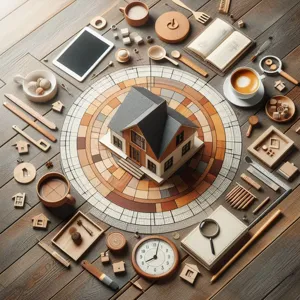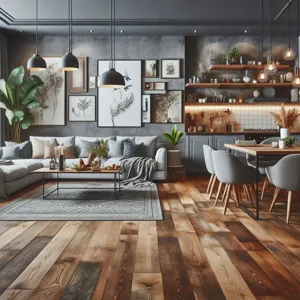Choosing a car is often about more than just wheels and engines; it’s a reflection of who you are.
Your vehicle can speak volumes about your personality, lifestyle, and aspirations, making the decision to buy a car a deeply personal journey. Whether you’re a spirited adventurer who craves the thrill of the open road, a city dweller who values style and compact efficiency, or a family-oriented individual in need of space and comfort, the right car can amplify your identity and complement your everyday life. In this blog post, we’ll explore the fascinating intersection of personality and automobile choice, offering insights and tips to help you select a vehicle that not only meets your practical needs but also embodies your unique character. Get ready to discover how to drive your identity and find the perfect car that resonates with your inner self!
1. Understanding the Connection Between Personality and Car Choice

When it comes to choosing a car, many people don’t realize that their vehicle can serve as a powerful extension of their personality. Just like the clothes we wear or the homes we decorate, the car we drive often reflects our tastes, lifestyle, and even our values. Understanding the connection between personality and car choice is the first step towards selecting a vehicle that truly resonates with who you are.
For the adventurous spirit, a rugged SUV or a sporty crossover might be the perfect match, offering the freedom to explore off the beaten path and embrace spontaneous road trips. On the other hand, the sophisticated individual may gravitate towards sleek sedans or luxury vehicles, which not only exude elegance but also provide a sense of status and refinement.
consider the practical-minded individuals who prioritize functionality—compact cars or hybrids may appeal to those who value efficiency and sustainability. Meanwhile, the creative souls might be drawn to unique, quirky models that stand out from the crowd and allow for personal expression through customization.
Your car choice can also reflect your lifestyle. A busy professional may opt for a reliable sedan that balances comfort with performance, while a growing family might seek out a spacious minivan or an SUV that accommodates everyone with ease.
As you navigate the process of selecting the right car, take a moment to reflect on what aspects of your personality you want to showcase. Are you looking for something sporty and dynamic, or something more classic and timeless? By understanding the intrinsic connection between your identity and your vehicle, you can make a choice that not only meets your practical needs but also enhances your sense of self on the road.
2. The Role of Lifestyle in Car Selection
When it comes to choosing the right car, understanding your lifestyle is paramount. Your vehicle is often an extension of who you are, reflecting your daily habits, preferences, and aspirations. Think about how you spend your time and what activities bring you joy—this insight can guide you toward a car that complements your lifestyle seamlessly.
For the adventurous spirit, a rugged SUV or a versatile crossover might be the perfect match. These vehicles not only offer ample space for outdoor gear but also provide the robust capabilities needed to tackle off-road trails and weekend getaways. If you love to hit the road for spontaneous camping trips or outdoor excursions with friends, a car that can handle rough terrain and offer multiple seating options will enhance your experiences.
On the other hand, if your daily routine revolves around city living—complete with traffic jams, narrow parking spots, and bustling streets—a compact car or a stylish hatchback could be your best bet. These vehicles are designed for efficiency, making them perfect for navigating urban landscapes while also reflecting a chic, modern aesthetic. Their smaller size not only makes city driving easier but can also lead to savings on fuel and parking costs, giving you more freedom to enjoy the urban lifestyle.
For those whose lives are filled with family responsibilities, a spacious minivan or a family-friendly SUV may be the ideal choice. With room for car seats, sports equipment, and groceries, these vehicles prioritize comfort and convenience, ensuring that family outings and errands are hassle-free. The emphasis on safety features and reliability in these models will provide peace of mind for parents on the move.
Ultimately, your car should align with your daily life and future aspirations. By taking a step back to evaluate what role your vehicle plays in your lifestyle—whether it’s for commuting, weekend adventures, or family outings—you can make a choice that not only meets your practical needs but also resonates with your personality. Remember, a car is more than just a mode of transportation; it’s a reflection of who you are and how you choose to navigate the world.
3. Identifying Your Personality Type: A Quick Quiz

Finding the perfect car that resonates with your personality can feel like a daunting task, but it can also be an exciting journey of self-discovery. To simplify this process, we’ve created a quick and engaging quiz that will help you uncover your personality type and match you with a vehicle that speaks to your unique character.
The quiz consists of a series of thought-provoking questions designed to tap into your preferences, lifestyle, and values. Are you an adventurous spirit who thrives on adrenaline, or do you prefer the comfort of a cozy ride? Do you value eco-friendliness and sustainability, or is luxury and prestige more your style? Each question is crafted to help you reflect on what truly matters to you in your daily life and driving experience.
As you answer the questions, think about how you spend your weekends, your career aspirations, and even your favorite pastimes. Your responses will reveal insights into your lifestyle: whether you’re a thrill-seeker who might be drawn to a sporty coupe, a family-oriented individual who needs a spacious SUV, or a practical minimalist who prefers a compact, fuel-efficient hatchback.
Once you complete the quiz, you’ll receive tailored recommendations that consider not only the aesthetics of the car but also how it aligns with your values and needs. This exercise is more than just a fun diversion; it’s a chance to align your automotive choices with your identity, ensuring that the car you drive is a true reflection of who you are. So, buckle up and get ready to discover the vehicle that perfectly matches your personality!
4. Cars for Adventurers: The Ideal Vehicle for the Free-Spirited
When it comes to the adventurous spirit, the ideal vehicle is more than just a mode of transportation; it’s a passport to freedom and exploration. For those who thrive on thrill and seek the great outdoors, the perfect car will embody ruggedness, versatility, and a sense of wanderlust. Think of SUVs and crossovers that are not just capable of handling rough terrain but also offer the space and comfort for spontaneous road trips or camping getaways.
Consider models like the Jeep Wrangler or the Toyota 4Runner, both of which are designed for off-road escapades, boasting excellent ground clearance and robust four-wheel drive systems. These vehicles invite you to venture off the beaten path, whether it’s traversing rocky trails or navigating through winding forest roads. The thrill of driving through uncharted territories, with the wind in your hair and the promise of adventure ahead, is what makes these cars ideal companions for free spirits.
But it’s not just about rugged capabilities; the right adventure car should also reflect your personality. If you’re the type who loves both the thrill of the wild and the comforts of home, consider a vehicle with modern technological features that enhance your journey. Look for options with built-in navigation systems, connectivity features, and ample cargo space for all your gear. This way, you can stay connected while you’re off exploring, ensuring that you can share your adventures in real-time or find your way back to civilization if needed.
For true adventurers, the car also needs to be adaptable. A convertible can be a fantastic choice for those who crave the open sky and spontaneous drives along coastal roads, while a minivan with all-wheel drive might suit families looking for weekend getaways to national parks. Remember, the best car for you is one that not only fits your lifestyle but also encourages you to explore new horizons, so you can truly embrace your adventurous spirit with every mile traveled.
5. Stylish Rides for Trendsetters: Choosing a Car That Makes a Statement

When it comes to making a statement, your car choice speaks volumes about your personality and lifestyle. For trendsetters, a vehicle isn’t just a mode of transportation; it’s a canvas for self-expression that reflects your unique style and flair. Opting for a stylish ride means embracing models that turn heads, spark conversations, and resonate with your vibrant persona.
Imagine gliding down the street in a sleek coupe or an eye-catching convertible, the sleek lines and aerodynamic curves catching the sunlight in a way that demands attention. Brands like BMW, Audi, and Tesla offer not just cutting-edge technology and performance but also a sense of luxury and sophistication that aligns perfectly with the modern trendsetter. These vehicles come equipped with distinctive features that enhance both aesthetics and functionality, from bold color options to innovative interior designs.
But style isn’t solely about luxury; it’s also about authenticity. Consider vehicles that resonate with your interests and values. Are you passionate about sustainability? An electric vehicle, such as the Tesla Model 3 or the stylish Nissan Leaf, not only aligns with eco-friendly principles but also showcases your forward-thinking mindset. Alternatively, if you have an adventurous spirit, a rugged yet stylish SUV like the Jeep Wrangler or the Land Rover Defender can reflect your love for exploration and the great outdoors.
Ultimately, the right car for a trendsetter is one that embodies individuality and confidence. Whether it’s the sound of a powerful engine, the feel of premium leather seats, or the tech-savvy features that keep you connected, your choice should resonate with who you are and what you value. Remember, the journey is just as important as the destination, and the right car will ensure that every drive is an expression of your identity. Choose wisely, and let your ride reflect the trailblazer that you are.
6. Practical Choices for the Organized: Functional Cars for Detail-Oriented Individuals
For those who thrive on organization and appreciate the beauty of functionality, the right car can be a reflection of your meticulous nature. Practical choices for detail-oriented individuals often go beyond mere aesthetics; they embody efficiency, reliability, and smart design. These vehicles cater to your need for order and can significantly enhance your daily routine.
Think of cars that come equipped with ample storage solutions, such as under-seat compartments, organized center consoles, and versatile back seats that can adapt to your needs—be it groceries, sporting equipment, or professional gear. Models like the Subaru Outback or Honda CR-V excel in providing spacious interiors that are both functional and user-friendly. Their thoughtful layouts and innovative features mean that everything has a designated place, allowing you to maintain that impeccable sense of order.
Additionally, consider cars that incorporate advanced technology, like integrated navigation systems and driver-assistance features. These tools not only enhance your driving experience but also keep you informed and secure on the road. Brands like Volvo and Tesla offer cutting-edge safety features and intuitive interfaces that appeal to your detail-oriented mindset, ensuring that every journey is smooth and stress-free.
It’s also worth noting that a clean, well-maintained vehicle is a source of pride for organized individuals. Opt for cars with easy-to-clean interiors and durable materials that stand up to the rigors of daily life. This way, your vehicle not only stays looking sharp but also reflects your personal commitment to order and care.
Ultimately, choosing a car that aligns with your organized personality is about more than just practicality; it’s an extension of who you are. When you find that perfect blend of functionality and style, you’re not just driving a car; you’re driving your identity.
7. Eco-Friendly Options for the Environmentally Conscious

When it comes to selecting a vehicle that aligns with your values, eco-friendly options offer a perfect blend of sustainability and style. For the environmentally conscious individual, choosing a car that minimizes your carbon footprint can be a reflection of your commitment to preserving the planet. Electric vehicles (EVs) and hybrids are increasingly popular choices, as they offer innovative technology and impressive fuel efficiency while emitting fewer greenhouse gases.
Imagine slipping behind the wheel of a sleek electric sedan, the silence of the engine a testament to its eco-friendly design. With brands like Tesla leading the charge, you’ll find vehicles that not only perform exceptionally well but also come equipped with cutting-edge features like regenerative braking and advanced autopilot capabilities. These cars aren’t just about getting from point A to point B; they represent a lifestyle choice that prioritizes sustainability without sacrificing performance.
For those who still appreciate the feel of a traditional engine but want to make a positive impact, hybrid cars offer a compelling compromise. They combine a gasoline engine with an electric motor, allowing for reduced emissions and improved fuel economy. Picture yourself driving a stylish hybrid SUV, effortlessly navigating the urban jungle while knowing that your choice is kinder to the environment.
Beyond the tech specs and fuel efficiency, many eco-friendly vehicles come with unique designs that stand out on the road. Their modern aesthetics often reflect a forward-thinking mindset, making them ideal for individuals who value innovation and sustainability. Furthermore, numerous manufacturers are now incorporating recycled materials into their interiors, demonstrating a commitment to eco-friendliness at every level.
Incorporating an eco-friendly vehicle into your life not only enhances your personal identity but also serves as a conversation starter. Whether you’re advocating for sustainable living with friends or sharing your passion for innovation with like-minded individuals, driving an environmentally friendly car sends a clear message about who you are and what you stand for. So, if you’re ready to make a choice that aligns with your values while enjoying the thrill of the drive, consider going green—your car can be a reflection of your personality and your commitment to a better world.
8. Performance vs. Comfort: Finding Your Balance
When it comes to choosing a car that aligns with your personality, one of the most significant decisions you’ll face is finding the right balance between performance and comfort. Each driver has unique preferences, and understanding where you stand on this spectrum is crucial in selecting a vehicle that truly reflects who you are.
Performance enthusiasts often crave the thrill of a powerful engine, agile handling, and an exhilarating driving experience. If you find joy in the roar of an engine and the rush of acceleration, a sporty coupe or a high-performance sedan may be calling your name. These cars not only turn heads with their sleek designs but also offer an adrenaline-pumping experience that makes every drive an adventure. However, it’s essential to consider what trade-offs come with such exhilarating rides. Performance vehicles can sometimes sacrifice comfort, with stiff suspensions and minimal cabin space that may leave you feeling fatigued on long journeys.
On the other hand, if you prioritize comfort and relaxation behind the wheel, a spacious SUV or a luxury sedan might be more suited to your lifestyle. These vehicles are designed to offer a smooth ride, plush seating, and advanced technology, ensuring that you and your passengers travel in style and ease. They are perfect for long road trips or daily commutes where comfort is key. Yet, it’s important to acknowledge that some comfort-oriented models may lack the spirited performance that driving enthusiasts crave.
Finding your balance between performance and comfort ultimately comes down to your lifestyle and what you value most in a driving experience. Consider how you typically use your vehicle—do you often embark on long journeys with family, or do you enjoy weekend drives on winding roads? By evaluating your needs and preferences, you can narrow down your options and select a car that not only drives well but also makes you feel at home behind the wheel. After all, your car is an extension of your identity, and the right choice will reflect your personality while enhancing every journey you take.
9. The Importance of Brand Identity: What Your Car Says About You
When it comes to choosing a car, it’s not just about functionality or fuel efficiency; it’s a reflection of your personality and lifestyle. Your vehicle serves as a mobile extension of who you are, broadcasting your values, interests, and even aspirations to the world. Understanding the importance of brand identity in this context can help you select a car that aligns perfectly with your unique character.
For instance, if you’re someone who thrives on adventure and exploration, a rugged SUV or a versatile crossover might resonate with your spirit of wanderlust. These vehicles not only offer practicality for outdoor excursions but also convey a sense of boldness and readiness for the unknown. On the other hand, if you pride yourself on professionalism and sophistication, a sleek sedan or luxury car can project an image of success and ambition, making a statement in any corporate parking lot.
Moreover, even the color of your car can speak volumes about your personality. Bright shades like red or yellow might suggest a vibrant, outgoing nature, while neutral tones such as black, gray, or white can indicate a preference for timeless elegance and classic style. The choice between a sporty coupe or an eco-friendly hybrid can also reflect your lifestyle choices and values, showcasing whether you prioritize performance or sustainability.
Ultimately, understanding the brand identity of different car manufacturers can further guide your decision. Brands like Tesla embody innovation and a forward-thinking approach, while Jeep communicates adventure and ruggedness. By choosing a car that aligns with both your personal identity and the brand’s ethos, you not only drive a vehicle that fits your needs but also one that truly represents you on the road. So take the time to explore your options, consider what your car says about you, and make a choice that drives your identity forward with confidence.
10. Family-Friendly Vehicles for Nurturers and Caregivers
When it comes to nurturing and caregiving, the right vehicle can make all the difference in your ability to care for loved ones, whether they are children, elderly family members, or even furry friends. Family-friendly vehicles embody safety, space, and comfort, perfectly aligning with the nurturing personality traits you embody.
Imagine sliding behind the wheel of a spacious minivan, where sliding doors offer easy access for children climbing in and out, and ample legroom accommodates family road trips or school drop-offs. Look for models with advanced safety features such as lane-keeping assist, blind-spot monitoring, and rearview cameras. These vehicles prioritize the well-being of your passengers, reflecting your commitment to their safety.
If you prefer a more adventurous vibe but still want to maintain that family-friendly edge, consider a crossover SUV. With higher ground clearance and four-wheel drive options, these vehicles are perfect for weekend excursions to the mountains or beach. Interiors equipped with flexible seating arrangements and plenty of cargo space for strollers, sports equipment, or family pets demonstrate a thoughtful approach to transportation that aligns with your nurturing instincts.
Moreover, technology plays a vital role in today’s family vehicles. Look for features like integrated infotainment systems that keep kids entertained on long drives or smartphone connectivity that allows you to manage communications hands-free, so you can focus on the road—and on your loved ones.
Ultimately, the right family-friendly vehicle reflects your identity as a nurturer and caregiver. It serves not only as a mode of transport but as a reliable companion in the journey of life, ensuring that you can always be there for those who matter most. As you explore your options, keep in mind what fits your family’s lifestyle and your personal values, and you’ll find a vehicle that truly embodies your caring nature.
11. The Influence of Color and Design on Personal Identity
When it comes to choosing a car that resonates with your personality, the influence of color and design cannot be overstated. The colors we choose to surround ourselves with can evoke emotions, convey messages, and even reflect our moods. Your vehicle is no exception.
Imagine for a moment driving a vibrant red sports car; it radiates energy, excitement, and a sense of adventure. This bold choice is often favored by those who embrace life with passion and enthusiasm. On the other hand, a sleek black sedan might suggest sophistication, professionalism, and a touch of mystery, appealing to someone who values understated elegance and control.
Design elements play a crucial role too. A rugged SUV often signals a love for the outdoors and adventure, while a compact hatchback may indicate a practical, city-savvy personality. The curves, lines, and overall silhouette of a car can express traits like agility and playfulness or strength and stability.
Moreover, color psychology suggests that certain hues can influence our perceptions and interactions. Blue, for instance, is often associated with trust and reliability, making it a popular choice for professionals who want to project stability. Meanwhile, a bright yellow car can signify optimism and cheerfulness, attracting attention and creating a sense of approachability.
In essence, your choice of car color and design is a reflection of who you are and how you want to be perceived by the world. As you consider your next vehicle, think about the colors and styles that resonate with your identity. Whether you want to make a bold statement or prefer a subtle nod to your personality, choosing the right car can be a powerful way to drive your identity forward.
12. Budget Considerations: Matching Your Car Choice to Your Financial Personality
When it comes to selecting the perfect car that embodies your identity, budget considerations play a pivotal role in aligning your choice with your financial personality. Just as your car reflects your style and preferences, your financial habits reveal much about how you approach spending and saving.
Start by assessing your financial situation: Are you a savvy saver, always on the lookout for the best deals? Or are you more of a free spirit, willing to splurge on what makes you happy? If you lean towards frugality, consider a reliable, economical vehicle that offers great fuel efficiency and low maintenance costs. Brands known for their longevity and value, like Honda and Toyota, might resonate with your practical side and help you feel confident in your choice.
On the other hand, if you have a penchant for luxury and are comfortable with your finances, you might gravitate toward high-end brands that offer exquisite features, performance, and prestige. A sleek BMW or a sophisticated Mercedes-Benz could not only enhance your driving experience but also reflect your success and ambitious spirit.
Remember that your budget isn’t just about the purchase price; it encompasses insurance, fuel, maintenance, and potential financing options. Assessing these factors will help ensure that your car fits seamlessly into your financial lifestyle, avoiding the stress of overspending or compromising on quality.
Ultimately, your vehicle should not only be a reflection of your personality but also a practical extension of your financial identity. By mindful budgeting and thoughtful consideration, you can choose a car that mirrors who you are while keeping your financial well-being in check.
13. Test-Driving Your Options: The Experience Matters
When it comes to choosing the right car, the experience of test-driving is often overlooked but is one of the most critical steps in the decision-making process. It’s not just about the specifications or the price tag; it’s about how a car makes you feel when you slide into the driver’s seat and grip the steering wheel. This is your chance to truly connect with the vehicle and gauge whether it resonates with your personality and lifestyle.
As you approach the car, take a moment to appreciate its exterior. Does the design speak to you? Is it sleek and modern, or rugged and adventurous? Once inside, pay attention to the layout and comfort. Are the seats supportive and inviting, or do they leave you feeling cramped? The dashboard should feel intuitive—your fingers should glide over controls, and the tech should enhance, not complicate, your driving experience.
During the test drive itself, focus on how the car responds to your commands. Feel the power of the engine as you accelerate; does it match your need for speed? Notice how it handles turns and how it feels on the road—whether smooth cruising or off-road adventures, the car should complement your driving style. Listen for any unusual noises that might indicate underlying issues, and pay attention to how well the vehicle isolates you from the outside world.
Finally, don’t forget to envision your daily life with this car. Picture yourself running errands, embarking on weekend getaways, or simply commuting to work. Does it effortlessly fit into your routine and reflect who you are? Test-driving is your opportunity to ensure that the car you choose is not just a mode of transport but an extension of your identity. Embrace the experience, and let it guide you to a car that truly resonates with your personality.
14. Customization: Making Your Car Truly Yours
Customization is more than just a trend; it’s a powerful way to express your unique identity through your vehicle. When you choose to personalize your car, you’re not just opting for a mode of transportation; you’re creating a reflection of who you are. This journey begins with considering what aspects of your personality you want to showcase. Are you adventurous and love the open road, or do you prefer a sleek and sophisticated aesthetic? The options for customization are virtually limitless, allowing you to tailor every detail to align with your individual style.
Start with the exterior of your car. A fresh coat of paint in a bold color can transform a mundane vehicle into a head-turning statement piece. From matte finishes to high-gloss designs, your choice of color can evoke emotions and convey your vibe. Additionally, adding custom decals or wraps can tell a story or symbolize your interests—maybe a mountain range for the outdoor enthusiast or a sleek stripe for the speed lover.
Moving to the interior, consider upholstery upgrades that not only enhance comfort but also reflect your personality. Leather seats can offer a luxurious feel, while vibrant fabrics can inject energy into your ride. Don’t forget about the tech features! Customizing your car with the latest audio systems, infotainment options, and ambient lighting can create an inviting atmosphere that resonates with your lifestyle.
Moreover, performance modifications can also align with your identity. Whether it’s tuning your engine for more power, upgrading your suspension for a smoother ride, or adding custom wheels for that perfect stance, these enhancements can elevate your driving experience to match your adventurous spirit.
Ultimately, customization transforms your car from a simple means of transport to a personal sanctuary on wheels, a space that feels uniquely yours. By investing time and thought into the customization process, you not only enhance your car’s aesthetic and functionality but also create a deeper connection with it, making every journey a true reflection of who you are. So, roll up your sleeves and let your creativity shine; your car is a canvas waiting for your personal touch!
15. Final Thoughts: Driving Towards Authenticity in Your Choices
As we conclude this exploration of how to choose the right car for your personality, it’s essential to reflect on the deeper connection between our vehicles and our identities. A car is more than just a mode of transportation; it’s an extension of who we are and how we navigate the world. Whether you gravitate towards a sleek sports car that exudes confidence and speed or a rugged SUV that embodies adventure and resilience, your choice speaks volumes about your values, aspirations, and lifestyle.
Choosing the right car is ultimately about authenticity. It’s an opportunity to showcase your individuality and express your unique story. Take the time to consider what truly resonates with you. Is it the thrill of the open road, the comfort of a family-friendly sedan, or perhaps the eco-friendly ethos of an electric vehicle? Embrace the freedom to explore various options and allow your personality to guide your decision.
Remember, the journey doesn’t end once you drive off the lot. Owning a car is a continuous relationship that evolves over time. Regularly assess whether your vehicle still aligns with your personal growth and changing lifestyle. As you drive towards authenticity in your choices, you’ll not only find greater satisfaction in your vehicle but also cultivate a stronger connection to your true self.
In the end, let your car be a reflection of your journey—a symbol of your passions, dreams, and the road ahead. So buckle up, enjoy the ride, and drive with intention as you navigate the highways of life in a vehicle that truly represents you.
As we conclude our exploration of how to choose the right car for your personality, we hope you feel empowered to make a decision that truly reflects who you are. A car is more than just a mode of transportation; it’s a statement about your lifestyle, values, and aspirations. Whether you lean towards the adventurous spirit of an SUV, the sleek elegance of a luxury sedan, or the eco-consciousness of an electric vehicle, remember that the perfect car should resonate with your identity and enhance your everyday experiences. Take your time, test drive a few options, and trust your instincts—after all, this choice is about driving your identity forward. We’d love to hear about your journey in finding the car that speaks to you, so feel free to share your stories and insights in the comments below!
























